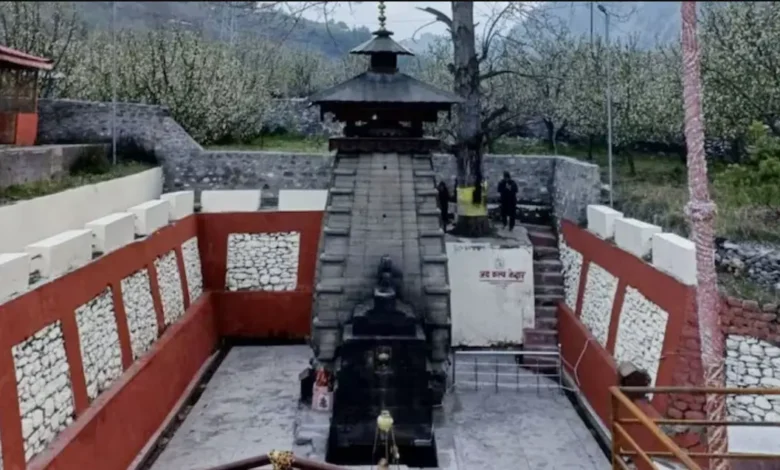Ancient Kalp Kedar Temple Was Buried Under Debris After Uttarkashi Cloudburst

Uttarkashi (India) – The Kalp Kedar Temple, an ancient Shiva temple that was buried for hundreds of years and only discovered in 1945, has once again been destroyed by a natural catastrophe. After a uttarkashi cloudburst that caused a massive flood in Uttarkashi, the temple was buried under rubble.
Kalp Kedar Temple, constructed in traditional Kature, has a striking architectural similarity to Kedarnath. This historical site has suffered extensive damage despite its resistance to many natural disasters over the past years.
It has an interesting past. It was hidden for many years under the earth, and only the tip of the temple could be seen. In 1945, it was discovered through excavation. It was discovered in 1945. The structure featured intricate stone carvings, a sacred sanctum, and a “shivling” that received water from the Kheerganga river.
The architectural jewel was located below the ground, so that devotees would have to go down to pray. The unique design of the temple allowed the water to flow from the river onto the shivling and create a path that worshippers embraced. Stone carvings on the temple further displayed ancient Indian craftsmanship.
Local authorities are assessing damage to the site and the potential for restoration. If available, insert a relevant quotation from an expert or authority.
It is not only a place of devotion, but also a link to Uttarkashi’s cultural and historic roots. The temple’s architectural similarity to Kedarnath Temple once attracted pilgrims as well as history lovers. Its state reminds us of the importance of conservation and increased awareness for sites that are prone to disasters.
Kalp Kedar Temple
The Kalp Kedar Temple is an important Shiva temple located in Uttarkashi (India). Its unique architecture shares similarities with Kedarnath. The temple was discovered in 1945, after being underground for hundreds of years. Its historical significance and location made it an important cultural and pilgrimage destination.





